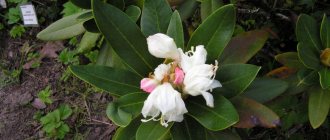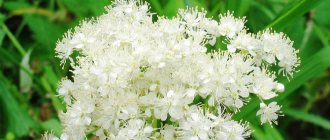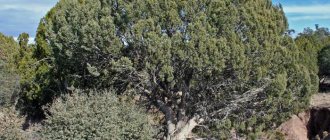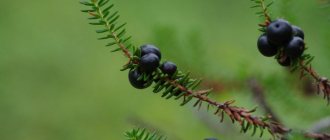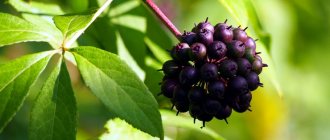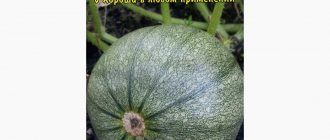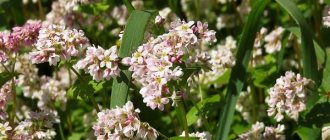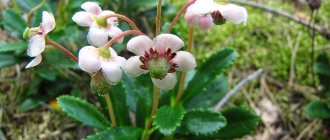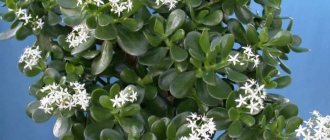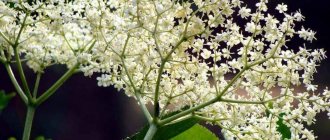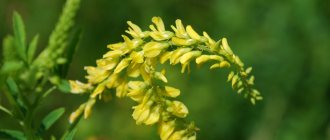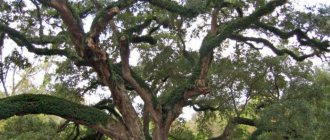Share Tweet Pin Send by email SMS mail
Everyone is familiar with the oak leaf - a common symbol in heraldry. You can find images on state awards and in decorative ornaments. However, you should understand that there are many varieties of oak, and their leaves are also different. Therefore, it is worth considering what an oak leaf will look like.
Description of oak leaves
Oak species are distinguished by leathery leaves. But there are evergreens on which the foliage remains for several years, and there are those on which they fall every year. Moreover, in some cases, oak leaves do not fall, but dry out, but remain on the branches, and over a period of time their gradual destruction occurs.
The average size is 7-15 cm. However, in large-leaved varieties the length reaches up to 40 cm, and the width is at least 25 cm. Such giants are rarely found in city parks. Some varieties have solid edges, others have carved edges, and still others have lobed edges.
In Russia, the most common is the pedunculate oak - a deciduous tree that reaches a height of 50 m. Even city residents have often seen this oak in parks, the leaves of which have a dark green tint. Botanists describe them as petiolate and lobed, and their structure as leathery. At the same time, they differ both in size and shape.
Greens are distinguished by reticulate venation (also called pinnate). On such specimens one can distinguish the main vein, which is quite powerful and clearly distinguishable visually. It runs through the middle - you can see it in any photo. Small veins radiate from it.
They create branches that form a network - hence the name of such venation. But since more large (although not so deep) veins extend from the main vein to the right and left, they give the leaf a resemblance to a feather. Therefore, sometimes the venation is called pinnate.
Application of oak
Contraindications: constipation.
Properties
- astringent
- antipyretic
- tonic
- antiseptic
- antiviral
- antitumor
- anti-inflammatory
- anthelmintic
Application
- oral inflammation
- burns
- bedsores
- frostbite
- bleeding
- tumors
- swelling
- dysentery
Properties of oak leaves
- antioxidant
- anticancer
- prevent the formation of plaques in blood vessels
- wound healing
- antibacterial
Application of oak leaves
- stomach ulcer
- skin inflammation
- hypertension
- fever
- bleeding
Bark decoction
4 tbsp pour 1 cup of boiling water. Heat in a water bath for 20-25 minutes. Strain. Bring boiled water to the original volume.
For the treatment of burns and bedsores
6-7 tbsp. pour 1 cup of boiling water. Heat in a water bath for 20-25 minutes. Strain. Bring boiled water to the original volume.
For ulcers, swelling, infections
Grind the dried inner layer of bark into powder and sprinkle it on the affected areas.
For bleeding, as an antiseptic
Apply the leaves by mashing them and placing them on the affected areas. To soften the leaves, they are steamed or dipped in boiling water.
Use of leaves for medicinal purposes
Take 5 oak leaves and rinse thoroughly with running water. Pour 2 cups of water over the leaves. Boil. Strain. Drink like tea, once a day.
For hemorrhoids, frostbite, sweating of the feet and palms
4 tbsp crushed bark pour 1 liter of water. Prepare a decoction. Take a bath with this decoction.
- Oak bark - 50 g
- Horsetail, grass - 20 g
- Valerian, root – 20 g
An infusion from this collection is used to soften stool.
- Oak bark - 30 g
- Flax seed - 30 g
- Chamomile, flowers - 40 g
Grind flax seed into powder. 1 tbsp. collection, pour 1 cup of boiling water. Leave for 20 minutes. Take 1/2 cup 2 times a day: morning and night.
Beli
2 tbsp. crushed bark per glass of water. Use this tea to cleanse your vagina 2 times a day, morning and evening before bed.
Haemorrhoids. 2 tbsp. crushed oak bark to 1 glass of water. Boil for 5 minutes. Cool. Strain and drink as tea.
Hair loss
4 tbsp oak bark powder pour 1 glass of water. Prepare a decoction. Rub into scalp.
Photo of leaves
They cannot be confused with others - they have a characteristic oblong shape and a lobed or carved edge. You can find a lot of summer photos, but many more autumn photos, since many varieties have leaves that turn beautifully yellow. And in holly oak they turn red.
This species is more common in North America, but can sometimes be found in a city park in Russia. So, in good weather, it’s worth taking a camera or at least a smartphone with you and going in search of a suitable tree.
If possible, you can even remove the texture, the very feathery venation described above. To do this, it is best to photograph the foliage in the light. There is not always enough light in the park to get such a photo. In this case, you can bring the specimen home and photograph it on glass, placing a light source under it. It is clear that professional cameras and macro lenses in such cases help to achieve better results.
Beneficial features
Not only oak bark has beneficial properties. For example, acorns are used to treat intestinal disorders, hernias and skin diseases.
Oak foliage smells pleasant and is an obstacle to the development of rot. Fragrant bath brooms are made from tree branches. The leaves are used to line tubs intended for pickles. The preparations do not sour and become especially tasty.
You can also make children's crafts from acorns. Acorns look very beautiful: they have a round shape and a pleasant glossy shine.
Autumn oak is an amazing sight. A mighty crown of yellow foliage pleases the human eye. When the leaves of the buzzards dry out, they remain on the branches, attracting attention with a quiet and mysterious winter rustle.
- Author: Maria Sukhorukikh
Rate this article:
- 5
- 4
- 3
- 2
- 1
(0 votes, average: 0 out of 5)
Share with your friends!
Pictures of leaves
When many people mention an autumn park, a picture from a botany textbook with an image of an oak leaf appears before their eyes. There are also those who collect herbariums and even keep special albums. But you can also sketch it in your sketchbook.
If desired, in the fall everyone will be able to try themselves as an artist. You need to go to the park, collect oak leaves there and create a whole collage.
To make it easier to draw a leaf, you can simply trace it on paper with a pencil, like a template. And then everything depends solely on imagination and artistic skills.
For example, you can color the drawing with watercolors, pencils or felt-tip pens. And you can take any shades - you can find many photos and drawings that will suggest the palette option.
If the color of summer leaves varies from light to dark green, then in autumn brown, brownish, yellow, and bright red shades are possible. At the same time, the veins always seem darker, and sometimes they are contrasting. A little patience and the picture will be ready.
What does an oak tree look like in autumn?
The oak, which can be found in the forest in autumn, does not lose its amazing beauty.
It changes the color of the foliage from green to bright yellow. In the first autumn months its leaves are amber-yellow. Closer to winter they dry out and turn brown. By October, many forest trees shed their bright colors and remain completely bare. The autumn oak tree is in no hurry to part with its foliage. Even if its leaf becomes dry and brown, it holds tightly to the branches, remaining on them until next spring.
If a tree grows in the thicket of a forest, it is crowded among other deciduous plants. Its trunk begins to stretch and thin. But if it grows in a spacious clearing, it becomes a mighty handsome man. Its trunk is thick, so the tree looks squat and stocky. Its branches, spreading in different directions, form a lush crown, decorated with carved foliage.
Botanical certificate
Oak (Quercus) is a genus of trees in the Beech family. There are more than 600 species in the genus, but about 20 are more or less common. The most noticeable difference between this tree and others is its original acorn fruits, which are essentially nuts. However, they also differ noticeably in their shape, size and color depending on the variety.
Oak branch with acorns
It is interesting that oak trees grow only in the Northern Hemisphere: in Africa and South America south of the equator, as well as in Australia, there is not a single oak tree. On the territory of Russia, only 3 species have any noticeable numbers. Let's look at them.
Oak - medicinal properties
The bark and leaves of pedunculate oak are widely used in folk medicine and homeopathy. They have anti-inflammatory, astringent, hemostatic, sedative and anthelmintic effects. Decoctions and tinctures are used for gastrointestinal diseases, diarrhea, colic, colitis, exacerbation of peptic ulcers, bleeding, varicose veins, liver and spleen diseases.
Oak bark is also used as a remedy for hemorrhoids, urinary incontinence, eczema (made as lotions), frostbite (in the form of baths), burns, scrofula, and bleeding gums. You can’t do without it if you have bad breath or excessive sweating of your feet. And baths with the addition of oak extract improve blood circulation, give good health, strengthen the immune system and the body as a whole.
English oak
In Russia, this oak (Quercus robur) is the most widespread. Large majestic trees form extensive oak forests in the European part of the country. Otherwise it is called common oak, English oak or summer oak.
English oak
The height of this tree can reach 40 m, and the age of the representative considered to be the oldest (Stelmuz oak in Lithuania) is about 2000 years. But on average, the common oak lives 300-400 years and reaches a height of 20-30 m.
The shape of the leaves, the color and texture of the bark, the fruits and the external outline of the tree are very specific, so it is quite difficult to confuse it with something else. Even small children in kindergarten can easily remember what an oak leaf looks like and do not confuse it with maple or rowan. And acorns open up real scope for creativity: are there those who have never made crafts from these nuts - for themselves or their children?
Blooming oak leaves. Photo by the author Young oak leaves blooming in spring look very touching. They are in no hurry; at the very beginning of their growth, their tiny fists have a delicate pink tint. However, in summer they are hard, leathery leaves, durable and very fragrant, especially in the heat and after rain.
Oak.
- It begins to bear fruit from 15 to 60 years of age, in open areas earlier than in plantations.
- English oak is the most common in Russia; it is a tree up to 40-50 m high and 1-1.5 m in diameter.
- Blooms simultaneously with the leaves blooming from 40-60 years
- Copper trees produce seeds from 20-30 years, but seed trees only from 60-100 years
- Acorns ripen in October
- Fruits abundantly every 4-8 years.
- Lives up to 400-1000 years.
- Common ink nuts, bludgeons or dubyankas are formed
- Crown diameter 25 m.
- In the first 2-3 years it grows very slowly, then growth accelerates. The active growth phase is observed in the first 20 years, when the annual growth is 30 cm in height and 20 cm in width.
From this list it is clear that the oak as a productive tree on the site will work for future generations. The person who planted it may not even see the first acorn from his tree.
However, let’s give an interesting example: one of the oldest oak trees on earth, which grows near Zaporozhye in the village of Verkhnyaya Khortytsia, brings almost 10 thousand kilograms of acorns in a fruitful autumn.
This is some kind of unique situation. And about the average results (the tree is not standing alone, but growing in the forest, among other trees), other figures speak: One tree in productive years produces from 40 to 100 kg of acorns, and 1 hectare of a middle-aged oak forest produces from 700 to 2,000 kg of acorns.
Here’s some interesting information: 1991 was a productive year in the Saratov region. Then they managed to collect 400 tons of acorns; according to Shubenkin, the seeds were even shipped to Ukraine and Moldova. But not every year is fruitful. Last year, Saratov foresters bought acorns in the Tambov region at a price of five to seven rubles per kilogram.
You cannot rely on oak to produce a regular harvest, and in fact, the acorns it produces are an essential addition to the animal’s diet, but not the main food.
Use of oak.
Not only are oak brooms in the bathhouse valued above all others, but without oak and cognac it is impossible to get, remember that cognac is a spirit infused in oak barrels, and the stars mark how many years it has been in the barrel. Oak leaves and bark are used in leather tanning and in herbal medicine. Only under an oak tree can the world’s most expensive mushroom, the truffle, grow, since it creates mycorrhiza with the roots of the oak tree and is a symbiont
Almost every large mushroom is sold at auction. In 2004, a mushroom weighing 850 grams was purchased for 28 thousand pounds sterling. They say that truffle contains androsterone, a hormone that awakens female sexuality.
You can make wonderful crafts from acorns.
Sessile oak
This species (Quercus petraea) resembles English oak. They have a similar structure of leaves, acorns, similar bark and crown shape. However, due to the different structure of the root system, sessile oak has some advantages. If D. petiolate has one clearly defined powerful taproot, then D. rocky has several of them. This increases the adaptability of the tree, and it survives and develops on a wide variety of soils.
Sessile oak. Photo from wikipedia.org
Another name is sessile oak or Welsh oak. In Russia, this type of oak is found in its western part and on the Black Sea coast of the Caucasus. The tree is charismatic and regal in appearance. Grows up to 30 m in height.
Breeders worked with basic plants and developed interesting decorative forms that are used in garden design. There are weeping varieties, forms with golden and variegated leaves, as well as with their unusual shape. It should be noted that decorative species do not grow to such gigantic sizes, but much lower.
There are other varieties of oak found in Russia. For example, D. serrated and D. chestnut-leaved are listed in the Red Book. The latter was actively logged, as its wood has exceptional hardness and frost resistance.
How to harvest oak
The bark of young trunks and branches, acorns, and leaves are used for medicinal purposes.
Cracked bark is not suitable for these purposes. Bark collection time: April-June. It is advisable to collect the bark before the leaves appear.
The bark is dried, spread out in one layer, in well-ventilated areas; it can also be dried in the sun. The bark is periodically turned over. You can determine whether the bark is dried by its brittleness.
To determine if the bark has been dried properly, look at the inside of the bark; it should be yellowish-brown or light brown in color.
Acorns are harvested when ripe, in the fall. Dry first in the sun, then in the oven. Then, they are removed from the shell and roasted like coffee until their color turns brown. Grind into powder.
To use acorns as food, they need to be soaked in cold water for a long time, changing the water periodically, in order to wash out the tannin, which imparts bitterness. When the water turns brown, change the water several times.
Leaves are collected in May-June.
Growing oak
Oak has a strong appeal. People who have plots large enough to accommodate a giant sooner or later plant one. Those who have smaller lands often choose decorative forms. You can become the owner of an oak tree in different ways: buy a seedling from a nursery (or dig it up in the forest, which is prohibited by law), root cuttings from a young tree, or plant an acorn.
Young oak foliage. Photo by the author
Planting an acorn
The simplest, but longest way to a majestic beauty is sowing an acorn. For this purpose, it is best to take fresh nuts collected in September-October from a healthy tree. There is almost no point in using old acorns, since organizing proper storage is quite difficult, and dried seed material becomes unviable. Fresh nuts collected on time germinate in almost 100% of cases. To do this, you need to sow them in the fall before snow falls.
Another option is to look for live acorns in the spring, immediately after the snow cover melts. You may not be lucky every year: fallen nuts are actively taken apart by mice, winter can be very frosty and destroy all the beginnings. However, it is worth trying to find germinating acorns in early spring and sow them immediately.
Fallen acorns in early spring
The soil should preferably be close to the one from which you collected the acorns. It’s good to take some soil from under the oak tree and sow nuts in it. If the planting material is questionable (for example, in spring), then sow thicker, leaving 2-3 cm between acorns. When the nuts are fresh, you need to sow them at a distance of 10-15 cm.
When sowing in spring, acorns are buried by 2-3 cm, when sowing in autumn - by 6-8 cm. You should not wait for sprouts too soon; oak trees can take more than a month to germinate. The plant first forms a fairly powerful root, and only then the “tops” appear.
Planting a seedling
To slightly shorten the time it takes to grow a large tree, you can purchase a seedling from nurseries. They offer both basic types and original varieties or decorative forms.
Oak bark
Oak bark contains tannins, which are used in medicine and the leather industry. In Russia, leather was treated only with oak bark. The processing of leather is called tanning. This word began to be used even if the skin was treated with other compounds (willow bark or chrome salts).
You may be interested in:
How to grow an oak tree from an acorn at home. Someone prefers to decorate their home with delicate and beautiful flowers, while others try to plant something at home…Read more…
Oak bark has the following beneficial properties:
- relieves inflammatory processes;
- heals wounds;
- treats stomach diseases (if you use its decoction);
- eliminates allergic reactions;
- helps with colds;
- heals gums.
For medicinal use, oak bark is collected in the spring. After collection, it is dried for 2-4 days. It must be stored dry and brittle.
Important!
Herbalists consider the bark collected from a young trunk or branch to be the most healing.
